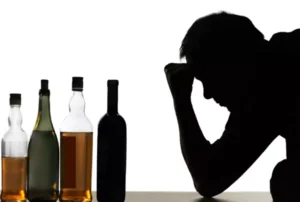Stimulants are drugs that act on the central nervous system by speeding up physical processes. It can mean increased heart rate and blood flow and elevated body temperature. Drug abuse in athletes covers both legal, illegal, and prescription stimulants. This is due to side effects such as dehydration, heatstroke, and nervousness.

Alcohol Abuse and Drug Use in Sport and Performance
- I was racing in Europe full-time, we had European riders on the team, we had European staff.
- I didn’t know if I could die from that, and sure enough, from the research that I’ve found out, that, yeah, it could have been really bad.
- Some ancient Greeks turned to figs, while others used mushrooms, and ancient Egyptians believed that ground mule hooves could boost their athletic prowess.
After the intervention, participants in the intervention condition reported less risky alcohol use than those in the control condition (Kingsland et al., 2015). For example, all else being equal, adolescent alcohol use would theoretically be lower in a community that had numerous alcohol-free social activities available that were reinforcing to young people than a community that did not have such alternative activities. Behavioral drug use in sports economic theory also posits that alcohol and drug use will be lower when individuals are orientated toward future rewards incompatible with substance use, such as successful educational and vocational outcomes (Murphy & Dennhardt, 2016). Therefore, environmental interventions that promote such a future-based orientation may result in diminished desire to obtain short-term reinforcement from alcohol and drug use.
Should drug policies in professional sports change?
«Major League Baseball’s investigation into the link between the now-shuttered Biogenesis anti-aging clinic and performance-enhancing substances provided to more than a dozen players culminated in Monday’s [Aug. 5, 2013] announcement that 13 players have been suspended. The most important key figures provide you with a compact summary of the topic of «Doping in professional sports» and take you straight to the corresponding statistics. Anti-Doping Research offers a list of landmark dates, with emphasis on milestones in drug testing and regulation, in «Key Anti-Doping Developments in Sport.» Nonsteroidal anti-inflammatory agents are widely utilized12 in sports and are reasonably safe if used properly.
Cyclist Lance Armstrong is stripped of his Tour de France titles
Injuries are another reason why many athletes endanger their «clean» athletes’ status, their will to return to competition can lead to compromises that can end their career. The existence of rules and Codes, as well as Anti-Doping Procedures and Biological Passports make doping more and more difficult to achieve. Much of the substances used today can be easily detected, but the development of new, cheaper and faster methods could help the Anti-Doping Federation. Since 2004, the World Anti-Doping Agency (WADA) has annually updated their Code and related documents that outline the official international anti-doping standards. British cyclist Tom Simpson passed away during the Tour de France on July 13, 1967, as he pedaled up Mont Ventoux on an extremely hot day.
But while players will not be suspended for positive tests, they can be fined several weeks’ salary, depending on the number of positive tests. First-time positive tests will, as before, mean diversion into a league-mandated treatment program. Players who refuse to take part in testing or clinical care can be suspended for three games after a fourth violation, with escalating penalties for further violations.»
Other prescription drugs
- Yet, studies reveal that athletes binge-drink and use recreational drugs to alleviate the pressure accumulated from demanding seasons of abstinence and stress [33].
- Performance-enhancing drugs have continued to evolve, with “advances” in doping strategies driven by improved drug testing detection methods and advances in scientific research that can lead to the discovery and use of substances that may later be banned.
- In fact, ‘clean’ athletes often use performance-enhancing substances that do not appear on the official World Anti-Doping Agency (WADA) prohibited list [14].
- Most of these studies focus on alcohol use, but in some cases their findings may translate to other substances.
- Consistent with behavioral economic theories, organizations could also promote social activities that do not involve substance use.
Overall, empirical support for these types of programs has been mixed, which is not surprising considering the diversity of approaches (Cronce & Larimer, 2011). A number of effective intervention and prevention strategies for alcohol abuse and drug use have been identified. This section of the chapter will address those strategies that have been well-studied and have the strongest empirical support. When possible, research that has examined these approaches specifically among athletes is presented here. Most of these studies focus on alcohol use, but in some cases their findings may translate to other substances.

Doping and anti-doping
The current conversation around the practice can be traced back to the revelation of steroid use in MLB players back in the late 90s to early 2000s. More than 24 MLB suspensions have been related to performance-enhancing drugs since 2005; on the NFL side, hundreds of games have been missed due to temporary suspensions related to doping. Performance-enhancing drugs (PEDs) are substances used to improve physical ability, notorious for their illegal use in athletic competitions. While these substances may not be illegal in general use, their clandestine use in sports, known as doping, is commonly prohibited. Another class of interventions involve those designed to teach individuals specific skills and strategies that are used to reduce alcohol and drug use and limit the likelihood of experiencing substance-related problems. Most of these programs have focused on alcohol use, and their specific content can vary widely and include both alcohol-specific topics and general lifestyle factors (Larimer & Cronce, 2007).
